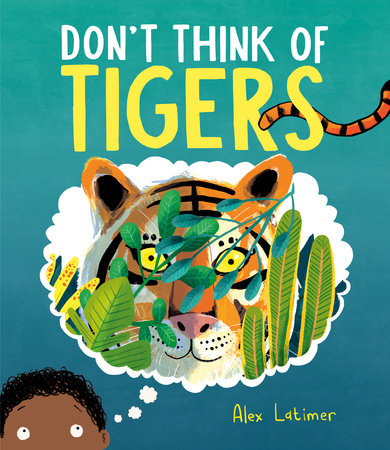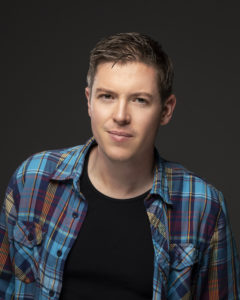Calling all stargazers and curious minds!
With Spring Astronomy Day approaching on May 3, 2025—a day dedicated to bringing astronomy to the people—it’s the perfect time to explore the wonders of the cosmos with your little ones. We’ve curated a stellar collection of 15 picture books that illuminate the mysteries of space, stars, and planets, igniting curiosity and wonder in young readers.
So grab a blanket, step outside under the night sky, or cozy up indoors, and let these stories launch your imaginations into the universe!
If I missed your favorite picture book that’s out of this world, drop it in the comments!
A Hundred Billion Trillion Stars by Seth Fishman, illustrated by Isabel Greenberg (May 2020)
From Goodreads: “Did you know that the earth is covered in three trillion trees? And that seven billion people weigh about the same as ten quadrillion ants? Our world is full of constantly changing numbers, from a hundred billion trillion stars in space to thirty-seven billion rabbits on Earth. Can you imagine that many of anything?
The playful illustrations from New York Times–bestselling artist Isabel Greenberg and the friendly, straightforward voice of author Seth Fishman illuminate some of the biggest numbers in the universe—a hundred billion trillion stars—and the smallest—one unique and special YOU. Here is a book for story time, for science time, for math time, for bedtime, and all the times in between.
Perfect for curious children, classrooms eager for STEM content, and readers who have devoured Ada Twist, Scientist and How Much Is a Million?”
- 40 pages
- Reading Age: 3–7 years
A Moon of My Own by Jennifer Rustgi, illustrated by Ashley White (September 2016)
From Goodreads: “An imaginative young girl travels the world with her faithful companion, the moon. In her enchanted adventure she visits all seven continents while the moon goes through its cycle of phases as portrayed in silhouetted art. “Explore More” sections for kids and adults offer information and activities on phases of the moon and other aspects of astronomy and geography.”
- 32 pages
- Reading Age: 3–10 years
Astro Girl by Ken Wilson-Max (November 2021)
From Goodreads: “The stars are the limit for a little girl who acts out her wish to be an astronaut — inspired by a very special person.
Astrid has loved the stars and space for as long as she can remember. “I want to be an astronaut!” she says to everyone who will listen. While her mama is away, Astrid and her papa have fun acting out the challenges an astronaut faces on a space mission — like being in zero gravity (“I can do that all day long!” she says), eating food from a kind of tube, and doing science experiments with the help of cookie sheets. When at last it’s time to meet Mama at the air base, Astrid wears her favorite space T‑shirt to greet her. But where exactly has Mama been? Channeling a sense of childlike delight, Ken Wilson-Max brings space travel up close for young readers and offers an inspiring ending.”
- 32 pages
- Reading Age: 4–8 years
Bright Sky, Starry City by Uma Krishnaswami, illustrated by Aimée Sicuro (May 2015)
From Goodreads: “A little girl and her father have an opportunity to appreciate the wonders of the night sky. Phoebe helps her dad set up telescopes on the sidewalk outside his store. It’s a special night ― Saturn and Mars are going to appear together in the sky. But will Phoebe be able to see them with all the city lights? Raindrops begin to fall, followed by lightning and thunder. Phoebe is filled with disappointment as she and her father hurry inside to wait out the storm. But suddenly the power fails and then, amazingly, the rain and clouds disappear. Phoebe and her dad and all kinds of people spill into the street. And there, in the bright night sky, the splendor of the planets and a multitude of stars are revealed for all to see. An illustrated afterword includes information about the solar system, planetary conjunctions and rings, moons, telescopes and light pollution. A glossary and recommended further reading are also included.”
- 32 pages
- Reading Age: 6–9 years
Curiosity: The Story of a Mars Rover by Markus Motum (March 2018)
From Goodreads: “Discover the incredible story of the search for life on Mars, told from the unique perspective of Curiosity, the Mars Rover sent to explore the red planet.
Markus Motum’s stylish illustrations and diagrams reveal how a robot travelled 350,000,000 miles to explore a planet where no human has ever been.”
- 56 pages
- Reading Age: 4–9 years
The Fly Who Flew to Space by Lauren Sánchez (September 2024)
From Goodreads: “Lauren Sánchez, Emmy Award-winning journalist, pilot, and philanthropist, takes readers on a high-flying space adventure with Flynn the Fly in her picture book debut.Bold and inquisitive, Flynn is a little fly with big aspirations. School is tough, and it’s all too easy to be distracted by the rocket company down the road–especially while daydreaming about becoming an astronaut! One day while exploring, Flynn flies aboard a rocket that suddenly takes off! Follow Flynn on an exciting journey to space to learn more about our precious planet—from amazing natural wonders like the Amazon rainforest, to the atmosphere that protects it all. After all, big dreams and a curious mind can lead to the most amazing discoveries! With a book jacket that doubles as a glow-in-the dark poster, this engaging picture book from debut author and Emmy-award winner, Lauren Sánchez, features exquisitely detailed illustrations by Clio-award winner, Raleigh Stewart, and introduces important STEAM concepts. Encouraging exploration and conservation, Sánchez—and Flynn—will have little readers reaching for the stars.”
- 32 pages
- Reading Age: 4–7 years
Go for the Moon: A Rocket, a Boy, and the First Moon Landing by Chris Gall (June 2019)
From Goodreads: “Written and illustrated by Chris Gall, Go for the Moon! captures the fascinating detail and inspiring adventure of the moon landing. It is a captivating celebration of one of humankind’s greatest technical achievements and most extraordinary feats of exploration.
The Apollo 11 astronauts have prepared carefully for their attempt to be the first men to land on the moon. The young narrator of this book has prepared carefully, he explains the design of the spacecraft, the flight from the earth to the moon, and the drama of touching down–while shadowing the astronaut’s voyage with one of his own.”
- 48 pages
- Reading Age: 5–8 years
How to Be on the Moon by Viviane Schwarz (June 2019)
From Goodreads: “In the follow-up to How to Find Gold, best friends Anna and Crocodile are going on another intrepid adventure — this time, to the moon.
It’s almost impossible to get to the moon. It’s out in space, which is dark and empty, and it’s very far away. If Anna and Crocodile are going to make it to the moon, they’ll need some special skills, like being able to do math and having a lot of patience. They’ll also need to build a rocket. Not to mention the sandwiches for the journey. Luckily, when Anna and Crocodile put their minds together, nothing can stand in their way. Full of the same cheerful charm that made How to Find Gold so endearing, Viviane Schwarz’s pitch-perfect text and wonderfully colorful illustrations launch this story off the page in a true celebration of curiosity and the magic of imaginative play.”
- 32 pages
- Reading Age: 2–5 years
Just Right: Searching for the Goldilocks Planet by Curtis Manley, illustrated by Jessica Lanan (January 2019)
From Goodreads: “Do you wonder
if humans
are the only beings
who wonder
if they are alone
in the universe?
Our sun is a star.
In the night sky are all kinds of stars,
and orbiting those stars
are planets like the ones in our own solar system.
Could those planets have life
like we do on Earth?
Planet Earth is not too big,
not too small, not too hot,
and not too cold. It’s just right.
Our very own Goldilocks planet .…
Follow a young girl
as she explores these questions
in this gorgeous book about the wondrous search
for another Goldilocks planet.”
- 48 pages
- Reading Age: 5–9 years
Mae Among the Stars by Roda Ahmed, illustrated by Stasia Burrington (January 2018)
From Goodreads: “Inspired by the life of the first African American woman to travel in space, Mae Jemison.
When Little Mae was a child, she dreamed of dancing in space. She imagined herself surrounded by billions of stars, floating, gliding, and discovering.”
- 40 pages
- Reading Age: 3–6 years
Pluto Gets the Call by Adam Rex, illustrated by Laurie Keller (November 2019)
From Goodreads: “Pluto gets a call from Earth telling him he isn’t a planet anymore, so he sets out on a journey through the solar system to find out why in this funny and fact-filled romp that’s perfect for fans of The Scrambled States of America .
Pluto loves being a planet. That is, until the day he gets a call from some Earth scientists telling him he isn’t a planet anymore! You probably wanted to meet a real planet, huh? So, Pluto takes the reader on a hilarious and informative journey through the solar system to introduce the other planets and commiserate about his situation along the way. Younger readers will be so busy laughing over Pluto’s interactions with the other planets, asteroids, moons, and even the sun, they won’t even realize just how much they’re learning about our solar system!”
- 48 pages
- Reading Age: 4–7 years
Rocket Says Look Up! by Nathan Bryon, illustrated by Dapo Adeola (June 2019)
From Goodreads: “Meet Rocket–a plucky aspiring astronaut intent on getting her community to LOOK UP! from what they’re doing and reach for the stars in this auspicious debut picture book. Honored as a Chicago Public Library 2019 Best of the Best Book!A comet will be visible tonight, and Rocket wants everyone to see it with her–even her big brother, Jamal, whose attention is usually trained on his phone or video games. Rocket’s enthusiasm brings neighbors and family together to witness a once-in-a-lifetime sighting. Perfect for fans of Ada Twist, Scientist and Cece Loves Science–Rocket Says Look Up! will inspire readers of all ages to dream big as it models Rocket’s passion for science and infectious curiosity.Author Nathan Bryon, an actor and screenwriter, and Dapo Adeola, a community-minded freelance illustrator, bring their fresh talents, passion, and enthusiasm to the picture book medium.”
- 32 pages
- Reading Age: 2–4 years
Twinkle, Twinkle, Little Star by Jane Cabrera (September 2023)
From Goodreads: “A favorite lullaby becomes a celebration of love in this lushly illustrated version featuring animals from all over the world.”
- 32 pages
- Reading Age: 1–3 years
Where to Hide a Star by Oliver Jeffers (October 2024)
From Goodreads: “World-renowned artist and picture book creator Oliver Jeffers brings to life an endearing story about the magic of friendship—and sharing what brings us joy.Celebrate twenty years of The Boy in this highly anticipated new adventure from the internationally bestselling picture book creator of Lost and Found Oliver Jeffers! Once there was a boy who would often play hide-and-seek with his friends the star and the penguin. The star was always easy to find, but one day it went missing. So, the boy radioed the Martian for help, and soon found himself on an exciting spaceship rescue mission to the North Pole! But there, he discovered that he wasn’t the only one who had always dreamed of having a star as a friend …The out-of-this-world, long-awaited sequel to the much-loved Boy stories, loved all around the world—now introducing a brand-new character!”
- 48 pages
- Reading Age: 4–8 years
You Are the First Kid on Mars by Patrick O’Brien (May 2009)
From Goodreads: “As we look back to the beginnings of the space race, 2009 is also the year for looking forward to humankind’s next step toward the stars.In the spirit of books that once imagined colonies on the moon, Patrick O’Brien has created a unique look at your first trip to Mars. Using the most up-to-date designs and theories of what it will take to establish a base on Mars, you are off on an incredible journey, over 35 million miles to the red planet. Filled with details, and vividly brought to life, this is an adventure that you are never going to forget.”
- 48 pages
- Reading Age: 4–8 years

















 Maria Camila Correa is an editor at Random House Children’s Books, where she acquires and edits innovative and engaging picture books. With experience in multiple aspects of publishing—including editing Dr. Seuss books and international acquisitions—Maria brings a global perspective and an eye for storytelling that captivates young readers.
Maria Camila Correa is an editor at Random House Children’s Books, where she acquires and edits innovative and engaging picture books. With experience in multiple aspects of publishing—including editing Dr. Seuss books and international acquisitions—Maria brings a global perspective and an eye for storytelling that captivates young readers.














 Jessica Saint Jean is a literary agent at Root Literary, where she’s on a mission to bring bold, narrative-driven art to the forefront of children’s publishing. With nearly 15 years in the industry in a variety of roles, she knows the ins and outs of both storytelling and design. Jessica represents illustrators and author-illustrators across formats like board books, picture books, middle grade, and graphic novels, and she’s all about finding projects that pair striking visuals with unforgettable stories.
Jessica Saint Jean is a literary agent at Root Literary, where she’s on a mission to bring bold, narrative-driven art to the forefront of children’s publishing. With nearly 15 years in the industry in a variety of roles, she knows the ins and outs of both storytelling and design. Jessica represents illustrators and author-illustrators across formats like board books, picture books, middle grade, and graphic novels, and she’s all about finding projects that pair striking visuals with unforgettable stories.










